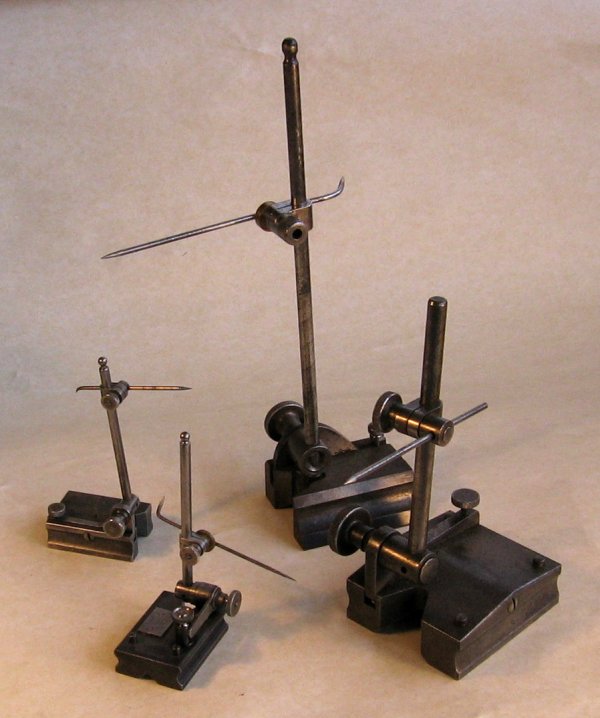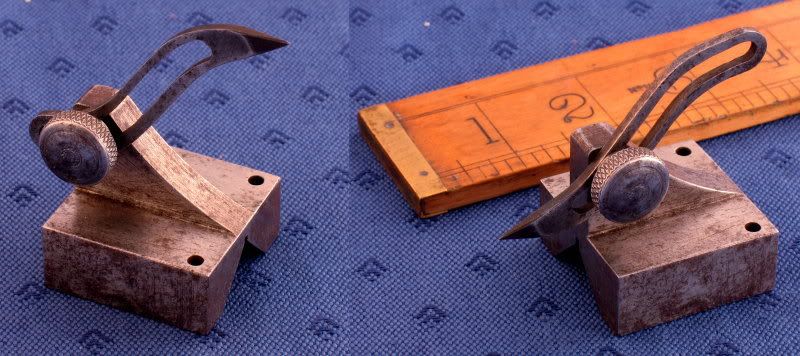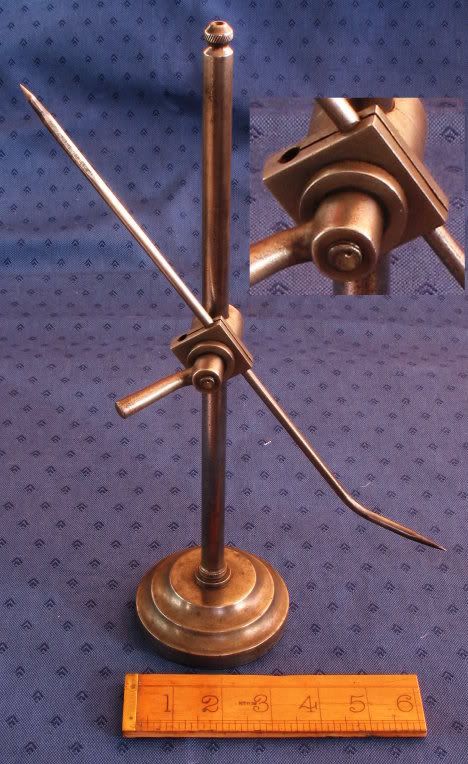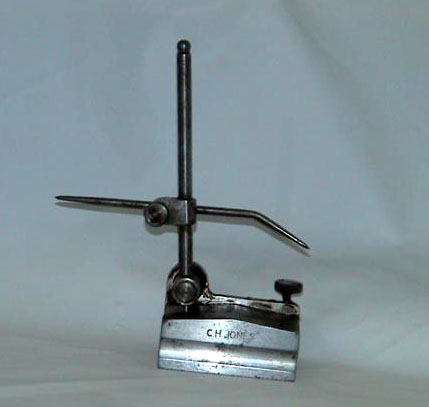bugbear
Established Member
In "another place" surface gauges cropped up.
Doubt was expressed as to the uses a woodworker might find for one.
I should probably say at this stage that I like 'em.

To use a surface gauge, which is really just a gadget for holding a scribing point at a fixed height from a surface, the workpiece is clamped with its reference edge(or face) on a flat surface. The surface gauge is set to the height which corresponds to the distance the mark is required from the edge, and sits on the same flat surface as the workpiece. Then either the workpiece is moved past the surface gauge, or vice versa, or a bit of both. The scribing process will be about as accurate as the flat surface is ... well ... flat.
Now, if you're just marking a plank for ripping, or the shoulder lines of dovetails, a surface gauge is not useful; woodworkers have well known gauges for those tasks.
But consider marking a section of moulding for ripping; this would require a pattern makers "grass hopper gauge" to get over the humps and bumps and get the marking point where it needs to go.
A surface gauge can do this easily.
Consider a workpiece where the edge isn't as long as the area to be marked (e.g. marking a pentagon parallel to one of its edges).
A surface gauge can do this easily.
Consider a workpiece where the edge to be marked from isn't (actually) straight, but wavy; the (obvious) requirment is to mark parallel to the "average" of the wavy edge.
A surface gauge can do this easily.
And finally, consider (this might be hard to visualise...) marking a workpiece presenting all three of the above difficulties.
A surface gauge can do this easily.
In short, whilst a woodworker would find no benefit from the surface gauge in common tasks, a surface gauge can make some otherwise tricky, though rare, tasks much easier.
BugBear
Doubt was expressed as to the uses a woodworker might find for one.
I should probably say at this stage that I like 'em.

To use a surface gauge, which is really just a gadget for holding a scribing point at a fixed height from a surface, the workpiece is clamped with its reference edge(or face) on a flat surface. The surface gauge is set to the height which corresponds to the distance the mark is required from the edge, and sits on the same flat surface as the workpiece. Then either the workpiece is moved past the surface gauge, or vice versa, or a bit of both. The scribing process will be about as accurate as the flat surface is ... well ... flat.
Now, if you're just marking a plank for ripping, or the shoulder lines of dovetails, a surface gauge is not useful; woodworkers have well known gauges for those tasks.
But consider marking a section of moulding for ripping; this would require a pattern makers "grass hopper gauge" to get over the humps and bumps and get the marking point where it needs to go.
A surface gauge can do this easily.
Consider a workpiece where the edge isn't as long as the area to be marked (e.g. marking a pentagon parallel to one of its edges).
A surface gauge can do this easily.
Consider a workpiece where the edge to be marked from isn't (actually) straight, but wavy; the (obvious) requirment is to mark parallel to the "average" of the wavy edge.
A surface gauge can do this easily.
And finally, consider (this might be hard to visualise...) marking a workpiece presenting all three of the above difficulties.
A surface gauge can do this easily.
In short, whilst a woodworker would find no benefit from the surface gauge in common tasks, a surface gauge can make some otherwise tricky, though rare, tasks much easier.
BugBear









